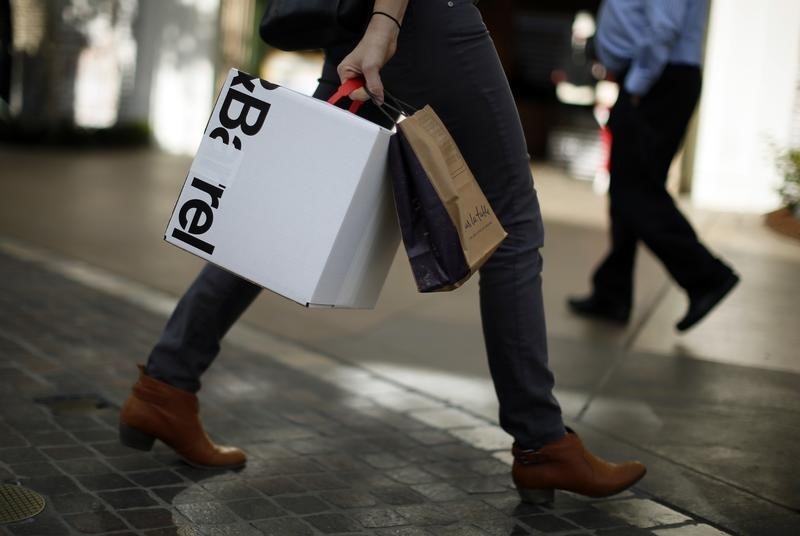* June retail sales +0.7 pct m/m vs forecasts +0.5 pct
* Q2 sales +0.8 pct q/q, spending adds to GDP
* Trade deficit widens to A$2.9 bln as export prices slide
* RBA expected to hold rates at meeting, maybe cut later in year
By Wayne Cole
SYDNEY, Aug 4 (Reuters) - Australian retail sales beat forecasts in June with the biggest rise in four months while household spending for the whole second quarter looked to have boosted economic growth, an upbeat outcome that gave the local dollar a lift.
However, other data showed the country's trade deficit exploded to almost A$10 billion ($7.3 billion) last quarter as sliding prices for major commodity exports sucked money out of the economy.
That drag on national incomes is a major reason the Reserve Bank of Australia (RBA) might yet have to cut rates again, even though it risks further stoking home prices.
The central bank meets Tuesday and is widely expected to hold rates at a record low of 2 percent for a third straight month. A statement is due at 0430 GMT and the market is primed for any hint on rates or effort to talk down the local dollar.
The Australian dollar reacted to the better retail numbers and rose a third of a U.S. cent to $0.7296, though interbank futures still implied a two-in-three chance of another policy easing by year end.
"On its own the strength in retail sales argues against further RBA interest rate cuts, but the poor outlook for business investment and low pricing power mean that the RBA may yet be forced to act on its easing bias," said Shane Oliver, head of investment strategy at AMP Capital.
Tuesday's data from the Australian Bureau of Statistics showed retail sales climbed 0.7 percent in June from May, when they rose an upwardly revised 0.4 percent.
That topped market forecasts of a 0.5 percent increase with sales of household goods especially strong. Sales for the second quarter beat expectations with an inflation-adjusted increase of 0.8 percent, helped in part by widespread price discounting.
That suggested consumer spending as a whole may have held up better in the quarter than many analysts feared.
A retail revival is needed as the sector accounts for A$288 billion of Australia's A$1.6 trillion ($1.22 trillion) of annual economic output, and is the second biggest employer with 1.25 million workers.
However, other data showed the country's trade deficit widened to A$2.9 billion in June, more than doubling the shortfall for the second quarter to a whopping A$9.9 billion.
The ballooning deficit largely reflects the impact of sliding prices for key commodities including iron ore, gold and coal, which in turn is crimping profits, wages and tax receipts across the economy.
